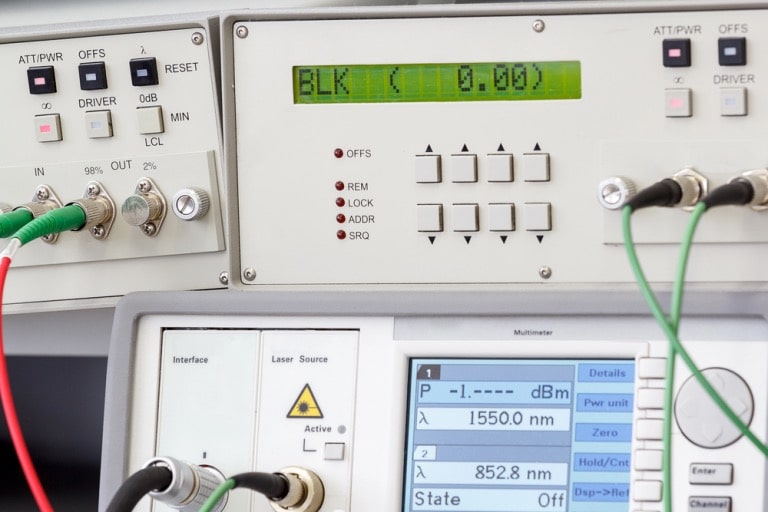Power Analyzers: The Key to Precision and Efficiency in Electrical Systems

Have you ever wondered how engineers ensure the efficiency and reliability of complex electrical systems? Advanced power analyzers are the unsung heroes behind the scenes. These sophisticated tools go beyond basic voltage and current measurements, offering features that provide deep insights into electrical performance.
In this article, I’ll discuss some of the most cutting-edge features of modern power analyzers and explore their real-world applications. Whether you’re a seasoned engineer or just curious about the tech that powers our world, you’ll discover how these devices are revolutionizing industries from renewable energy to automotive design.
Overview of Power Analyzers and their Importance in Electrical Systems
Power analyzers play a vital role in managing and optimizing electrical systems. These devices measure voltage and current and provide insights into power quality, efficiency, and harmonics. I remember when I first used a power analyzer on a project. It identified inefficiencies in our setup that I had yet to anticipate. Fixing those issues saved us thousands in energy costs.
A power analyzer offers detailed analysis, which is key when working with complex systems. Engineers rely on these tools to diagnose issues, optimize performance, and ensure compliance with standards. This makes them indispensable in industries like renewable energy, automotive, and manufacturing, where precision is crucial.
Key Features of Advanced Power Analyzers
Power analyzers are essential tools in evaluating and optimizing electrical systems. I’ve experienced firsthand how these advanced devices can truly improve performance and efficiency.
High-Precision Measurements
High-precision measurements play a critical role in my work. Advanced power analyzers provide accurate readings of voltage, current, and power. This accuracy is essential for setting benchmarks and comparing performance. For instance, I once identified minor inefficiencies in a motor system that saved significant energy costs over time.
Harmonic Analysis
Harmonic analysis helps detect and measure distortions in electrical systems. Advanced power analyzers identify these harmonics, which can affect equipment performance. Identifying these issues early prevents potential damage. These analyzers detect harmonics and provide data to correct them, ensuring smoother operations.
Real-Time Data Monitoring
Monitoring data in real time allows for immediate insights into system performance. Advanced power analyzers provide live data streams, helping me immediately make necessary adjustments. This feature is particularly useful when testing new installations or during system optimization, as I can instantly see the impact of changes.
Data Logging and Storage
Data logging and storage capabilities are vital for long-term analysis. Advanced power analyzers store data over extended periods, making tracking trends and identifying recurring issues easier. I often rely on this feature to review past performance and troubleshoot ongoing problems effectively.
Multi-Channel Inputs
Multi-channel inputs enable the analysis of multiple circuits simultaneously. This feature saves time, as I can measure several parameters without switching between devices. For example, during a recent project, I monitored both power supply and distribution networks concurrently, which streamlined the process significantly.
Using these features, I can maximize the efficiency and reliability of electrical systems, ensuring a more effective and insightful assessment.
Applications of Power Analyzers
Advanced power analyzers play a critical role across various fields. Their precise measurements and analytical capabilities support efficiency and reliability in numerous applications.
Industrial Automation
In manufacturing, power analyzers help optimize machine efficiency. I pinpointed an overloaded motor by closely monitoring electrical consumption, preventing downtime. Engineers often use power analyzers for:
- Identifying power surges
- Monitoring energy consumption
- Ensuring machines run at peak efficiency
These tools make it easier to maintain smooth operations.
Renewable Energy Systems
Power analyzers are essential in renewable energy systems. They measure the output from solar panels and wind turbines, ensuring optimal performance. Engineers use power analyzers to:
- Monitor inverter efficiency
- Track energy production rates
- Validate system performance against specifications.
By analyzing power data, these systems harness energy more effectively.
Power Quality Management
Maintaining high power quality minimizes disruptions. Power analyzers detect issues like voltage sags, harmonics, and transients. Facilities use these devices to:
- Prevent equipment damage
- Reduce production losses
- Improve overall system performance.
In one instance, I found a harmonic distortion issue affecting multiple machines, improving stability once resolved.
Electrical Testing and Certification
Power analyzers are invaluable in electrical testing and certification. They verify compliance with electrical standards and test the performance of electrical devices. In certification labs, power analyzers:
- Measure power consumption accurately.
- Validate compliance with regulatory standards.
- Test efficiency and performance of consumer electronics
Their accuracy enhances the reliability of testing outcomes.
Conclusion
Leveraging a power analyzer has significantly boosted efficiency in my projects. I’ve managed to save energy and optimize overall performance by pinpointing inefficiencies. High-precision measurements and real-time monitoring enable immediate adjustments, ensuring reliable systems.
When I first used harmonic analysis to troubleshoot a client’s machinery, the detailed insights provided allowed me to address issues swiftly, enhancing their operational uptime. Advanced features like multi-channel inputs and data logging make these tools indispensable in various applications.




